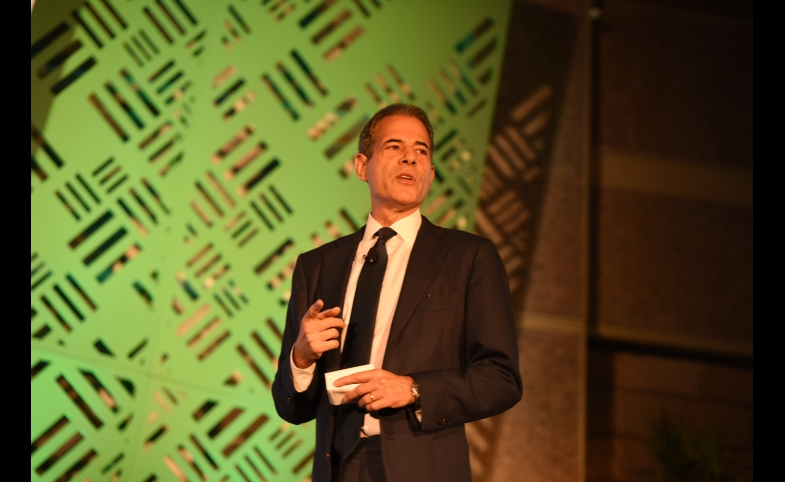The Voice of America and the U.S. international broadcasting community as a whole could use structural reform and more money. But that’s not why they appear to be failing miserably. No. The real failure is that they...
KEEP READINGThe CPD Blog is intended to stimulate dialog among scholars and practitioners from around the world in the public diplomacy sphere. The opinions represented here are the authors' own and do not necessarily reflect CPD's views. For blogger guidelines, click here.

U.S. Public Diplomacy Commission's Uncertain Future
What do Fulbright fellows in Kenya, the broadcasts of Radio Free Asia, and the Foreign Press Center near the United Nations have in common? All are facets of U.S. public diplomacy, which advances national security by informing, engaging and influencing the views of people around the world.
Public diplomacy (PD to its friends) is one of the less celebrated but more intriguing investments in U.S. foreign policy. For decades, it has earned lasting allies for our country and helped multitudes understand and embrace our core values, including human rights, freedom of information, strong civil society and education for all.
And yet just 3.5 percent of what we spend on civilian international affairs – which altogether is about 1 percent of the federal budget, so we’re talking about a fraction of a sliver – goes to such programs. This modest down-payment on America’s future deserves recognition and prudent stewardship.
Promoting both is the job of the bipartisan U.S. Advisory Commission on Public Diplomacy, which Congress is considering reauthorizing before its mandate lapses this week. Its members, appointed by the White House and confirmed by the Senate, work with a lean team of expert employees to assess PD’s effectiveness, recommend policies and programs and write up its findings for the president, Congress and the public.
The commission has just released an assessment of all PD efforts at the State Department and the Broadcasting Board of Governors. The comprehensive report drills down on some timely issues such as push-back against Russian propaganda in the former Soviet states and the use of communications to combat violent extremist groups. It raises questions about resource allocation and makes 28 big-picture recommendations, plus nearly three dozen program-specific proposals for places to improve.
Here are some of the top takeaways:
-
PD efforts worldwide are short-staffed and under-funded. At the same time, a risk-adverse State Department personnel system often quashes innovation that could lead to more creative use of existing resources. But the commission commends Under Secretary for Public Diplomacy and Public Affairs Richard Stengel, who came on board early last year, for encouraging career staffers to take more calculated risks and “get caught trying.”
-
State Department “American spaces,” ranging from curated bookshelves in local university libraries to brick-and-mortar cultural oases – many offering everything from movie nights to training in civil society tools to uncensored Internet use – are valuable, especially in countries that restrict access to information. Yet they face budget and security challenges; the report calls for explicit congressional support for keeping these facilities open and accessible.
-
Progress has been made within the past year to develop more rigorous research and evaluation – particularly at State, which recently created a new position to oversee this area. The commission proposes further expanding the Office of Policy, Planning and Resources (R/PPR) and increasing research operations at both State and the BBG. Both need strong data so they can better gauge what resonates with their audiences and provide solid metrics to make decisions on how best to allocate their funds.
-
The report highlights the BBG’s boost in programming during the past year in response to crises in Ukraine and the surrounding region through VOA and Radio Free Europe/Radio Liberty. It calls for more, along with other PD efforts, throughout the former Soviet states to counter Russian influence. At a time when Moscow is choking off ideas from outside – targeting media, NGOs, cultural institutions and other traditional sources – the commission urgently pushes for more funding, staffing and creative programming of all kinds.
-
Similarly, it endorses recent PD efforts at countering violent extremism (CVE) through messaging and other means, and urges coordination across all government agencies engaged in this fight. It also recommends that congressional staffers specializing in defense and foreign affairs collaborate more closely to examine CVE efforts and see where PD fits in.
-
The commission roundly applauds the White House-led creation of academic and professional exchange programs for people from previously underserved regions, including Africa and Southeast Asia, and flags them for longer-term support.
At 360 pages, 50 alone dedicated to the executive summary, the new PD report is a hefty read. But it’s well worth a look, and it underscores that in spite of some shortcomings, much of the way our country exerts its “soft power” is well worthwhile.
The commission itself merits maintaining, too. Let’s hope Congress agrees, and either gives it a nod in a spending measure for Fiscal Year 2016 by Wednesday or in an authorization bill soon.
Note from the CPD Blog Manager: This piece originally appeared at The Hill.
Photo by U.S. Embassy Nairobi / CC BY 2.0
Visit CPD's Online Library
Explore CPD's vast online database featuring the latest books, articles, speeches and information on international organizations dedicated to public diplomacy.
POPULAR ARTICLES
-
November 3
-
November 5
-
November 13
-
November 25
-
November 17
Join the Conversation
Interested in contributing to the CPD Blog? We welcome your posts. Read our guidelines and find out how you can submit blogs and photo essays >.













